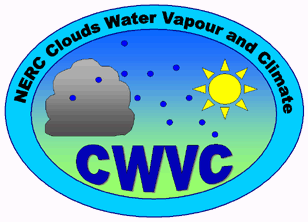Dataset Collection
Data from the Egrett Microphysics Experiment, with Radiation, Lidar and Dynamics campaigns (EMERALD-1 and EMERALD-2), part of the Clouds, Water Vapour and Climate (CWVC) programme
Abstract
The EMERALD projects were airborne measurement campaigns designed to study dynamical, microphysical and infra-red radiative properties of cirrus clouds, using both in-situ and remote measurement techniques. The dataset contains static air temperature, static air pressure, relative humidity, water vapour mixing ratio, and ozone mixing ratio. These data are part of the NERC Clouds, Water Vapour and Climate (CWVC) programme.
Details
| Previous Info: | No news update for this record |
|---|---|
| Previously used record identifiers: |
http://badc.nerc.ac.uk/view/badc.nerc.ac.uk__ATOM__dataent_11716676887315086
|
More Information (under review)
The EMERALD projects were airborne measurements campaigns designed to study dynamical, microphysical and infra-red radiative properties of cirrus clouds, using both in-situ and remote measurement techniques. In the case of EMERALD-1, this was mid-latitude frontal cirrus and during EMERALD-2 tropical convective outflow cirrus. Both projects took place in Australia, with EMERALD-1 based in Adelaide during September 2001 and EMERALD-2 based in Darwin during November and December 2002. Both these projects involved University of Wales - Aberystwyth, UMIST, Imperial College London and Airborne Research Australia.
EMERALD-1 CWVC project number: GST/02/2881
EMERALD-2 CWVC project number: NER/T/S/2001/201
Two instrumented aircrafts were used during these projects, both operated by Airborne Research Australia, a Beech B200T Super King Air and the Grob Egrett T520.
The King Air is a pressurised twin turbo prop aircraft, capable of carrying a scientific payload of 900kg to an altitude of 10km. For these projects, the King Air was carrying the Aberystwyth vertical pointing depolarisation lidar system and was flown below the cirrus.
The Egrett is a unique high altitude aircraft, capable of carrying a 500Kg scientific payload to 15km. During the EMERALD projects, the Egrett was equipped with the Cloud Particle Imager and Forward Scattering Spectrometer Probe (UMIST) to measure cloud microphysical properties, turbulence, and temperature probes (Aberystwyth/ARA), TAFTS (Imperial) which is a far infra-red spectrometer, an ozone monitor and frost point hygrometer (Aberystwyth/DLR) and a water vapour TDL (Aberystwyth). The Egrett was flown in, above and below the cloud in a co-ordinated flight plan with the King Air, such that the Egrett was always directly above the King Air during measurement legs (at least most of the time)
Both aircrafts were equipped with sophisticated differential GPS systems to allow accurate position and altitude to be determined. For EMERALD-2, high resolution cloud radar data was also available, provided by the Australian Bureau of Meteorology. The radar and lidar measurements, which were available in the King Air in real time allowed regions of interest within the cloud to be identified and the Egrett to be directed to fly through these regions. For EMERALD-2, the Lidar and radar data allowed the in-situ measurements to be interpreted in the context of large scale cirrus structure and evolution. The radar data also provided the necessary information about the location of active convective cells to allow safe operation of the aircraft.
The data are now publicly released. Please acknowledge the source of the data in any publication.
Data are stored in the BADC CWVC EMERALD project data archive.
The campaign results are briefly presented on the UMIST EMERALD website.
Other CWVC projects are described on the CWVC page at BADC.
- The CWVC Programme Science Co-ordinator is Dr Keith Bower (UMIST, Manchester).
- The CWVC Programme Administrator is Dr Sally Palmer (NERC, Swindon).
- Jim Whiteway (University of Wales - Aberystwyth) supplied the dataset.
If you have queries about these pages or about obtaining the Met Office Central England Temperature data from the BADC then you should contact BADC Support. Your query should be answered within one working day. When follow-up work is required, the BADC support will carry out the work as quickly and efficiently as possible, and in any case, the user will be kept informed of progress.
Temporal Range
2001-09-02T00:00:00
2002-12-02T23:59:59
Geographic Extent
-10.0000° |
||
130.5000° |
139.0000° |
|
-35.0000° |

